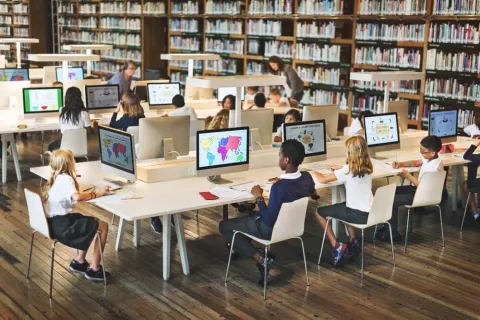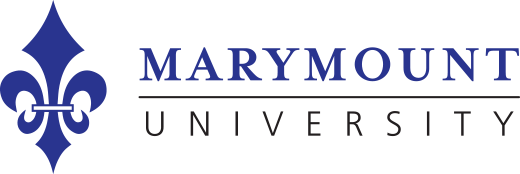Technology Enhanced Learning: Why, How and Tools

Originally published June 21, 2022 and refreshed May 12, 2023.
From elementary schools and junior highs to colleges and universities, education leaders are focused on ways that they can enhance student learning with technology. Even before the COVID-19 pandemic the critical need for students and teachers to be technologically savvy and able to conduct teaching and learning virtually was clear. This trend towards digital adoption in education is only accelerating into 2023 and beyond.
Education leaders are continually finding new ways to integrate technology into physical classrooms for improved student learning outcomes and to better prepare students to enter a high-technology world. Leaders in education are leveraging technology to make a positive difference in students' lives in myriad ways, including greater accessibility, increased engagement, higher levels of student-to-student collaboration and better tracking of students’ successes and areas of needed improvement.
What Is Technology Enhanced Learning?
Technology enhanced learning (TEL) refers to any type of technology, such as laptops, tablets and virtual learning environments, used to enhance learners’ educational experience. According to a 2022 report by Learn Platform, the use of educational technology (EdTech), including technology enhanced learning tools, increased by 99% after the start of the COVID-19 pandemic.
One popular example of TEL is gamification, which incorporates competition and point scoring into learning modules. The Internet-based language learning app Duolingo is a prime example of how gamification can keep learners engaged. This type of TEL is also highly effective, as evidenced by a 2020 study published in the International Journal of Human-Computer Studies which found that when reading and gamification are combined, students’ performance can be increased by up to 60%.
Other types of TEL, such as online collaboration tools, are also beneficial to teachers and learners. For example, tools such as Zoom, Slack and Google Docs help educators facilitate distance learning modules with students in various locations.
The benefits of technology learning are vast. In addition to helping remove distance-based barriers to learning, some types of EdTech provide educators with data-driven insights about students’ progress. This allows educators to understand how well students are performing in various lessons and whether additional support and/or interventions are needed.
Importance of Technology Enhanced Learning
Virtual learning produces benefits during students’ academic experience while preparing them for future careers. Online learning has been found to increase information retention and be more time-efficient. Education that incorporates technology not only effectively transfers knowledge, but also teaches students important digital skills that they will carry with them into their professional lives.
Digital transformation does not look the same for every setting, school or student. Just as individuals prefer different devices and apps in their everyday lives, teachers and students may opt for one program over another. Digital transformation does not require every education leader, teacher or student to implement technology in a singular way. Rather, it is primarily about cultivating an organizational culture of openness to technology, the readiness to engage and implement technological advances and a vision for student success that includes digital learning enhancements.
Examples of Education Leaders Utilizing Technology Enhanced Learning
Examples of leaders in education using technology learning to enhance students’ academic experience are numerous. Recent technology enhanced learning templates include the following:
1. Facilitating Self-Directed Learning for Greater Content Mastery
Education leaders in California’s Arcadia Unified School District saw an urgent need to increase student engagement and collaboration in classrooms across their 11 schools. They also wanted to implement a holistic plan for technology that would evolve over time and empower both teachers and students to work to the best of their abilities.
The district administrators decided to provide each student with a Chromebook, but they did not stop there. They knew that the equipment alone would not equip students with the resources they needed for greater academic success. Instead, leaders like Greg Gazanian, Chief Strategy and Innovation Officer at Arcadia Unified School District, saw the Chromebooks as the first step in a comprehensive digital transformation designed to enhance student learning.
“We didn’t just take technology and put it in the classroom and call it good,” said Greg Gazanian. “We made sure there was strong infrastructure and curricular support as well.”
In addition to one learning center, one high school and three middle schools, the district implemented its technology plan in six elementary schools. Beyond the Chromebook delivery, the district provided professional development for teachers and district-wide access to Google Workspace for Education — a no or low-cost solution now used by over 170 million educators and students.
These were just a few of the results for Arcadia:
- 70% of students reported they collaborated with other students at least once a month
- 71% of teachers said Google tools improved student collaboration
- 83% of students reported either liking or loving Google Workspace
- 83% of students said that Google products impacted the quality of their work
Technology empowered teachers in Arcadia to provide their students with more self-directed learning opportunities which, in turn, motivated them to collaborate with other students as well.
2. Leveraging Technology to Accelerate Literacy Outcomes in Junior High School
Educators at the Archdiocese of Denver wanted to address the severe literacy gaps that American children, and specifically their late elementary through junior-high-aged students, were facing. With 65% of American students reading below proficiency, and that deficit increasing their likelihood of dropping out of school by 400%, it was clear that something needed to be done. Education leaders in the Archdiocese looked for a solution that had proven results when it came to increasing student achievement and specifically supporting students with neurological differences that made reading a challenge, such as dyslexia.
They chose Learning Ally’s Audiobook Solution, which empowered students to download and read books. Through Learning Ally, teachers could help students with their book selections and keep an eye on their progress. Additionally, students could both listen to and read a book at the same time, increasing their literacy ability.
After just fifty days, students using Learning Ally doubled their rate of reading growth. Not only that, educators reported that students demonstrated higher levels of motivation, less frustration and greater enjoyment of reading after the technology was implemented.

3. Cultivating Creativity and Career-Readiness in High School
Creativity in problem-solving is one of the highest-ranked soft skills that modern employers are looking for when they assess potential hires. As high school teachers help their students prepare for college or careers, facilitating their creative potential is a high priority. Creativity is also linked with educational gains like critical thinking, deeper learning of the subject matter and content retention.
For education leaders at Johns Creek High School, creativity with technology enhanced learning was a way to engage students more deeply in learning. They implemented Adobe Express, an online and mobile design app and gave students access to it. Students caught on immediately, producing projects like a Black History Month infographic about astronomer Michael Phillip Anderso and personal videos describing themselves in exactly two minutes.
Teachers who integrated the Adobe Express technology yielded other benefits in their classrooms as well. For example, students who spoke English as a second language were able to create vocabulary pages with paired words and images that would help them remember key English words. Others built learning journals that paired their first language with English, helping them grow confidence in their English abilities.
By implementing Adobe Express, teachers not only provide opportunities for their students to express themselves creatively in school but prepare them for a wide variety of careers that will call upon them to use similar technology on a regular basis.
4. Personalizing the Admissions Process by Targeting Best-Fit Students through Technology
Pacific University in Oregon had a specific goal: to maintain the influx of students they received after reinstating their football program. University leaders knew that they needed a strategic approach — and a way of implementing that approach — in order to meet their goals.
Once they decided to focus on increasing enrollment by targeting best-fit students, Pacific University turned to Ellucian CRM Recruit, a recruitment-centric system that integrated with their existing campus technology.
The addition of Ellucian CRM Recruit had several positive effects for Pacific University, including:
- 100 to 120 hours per year saved in time spent programming new formats for SAT and ACT scores
- Empowering the admissions staff with reports, automated emails and dashboards
- Tracking RSVPs to recruitment events, responses to mailings and other relevant markers of potential student interest
Ellucian CRM Recruit has helped Pacific University to achieve its goal of recruiting students who are a strong fit for their small, liberal arts university.
“We have seen a lot of competitors in this region who have not been able to get applicants in,” said Ryan Garcia, Director of Marketing and Admissions at Pacific University. “We really focus on the connection with the students and getting that personal message across to them — which has been a huge advantage.”
Lead in Technology Enhanced Learning with an Ed.D. from Marymount University Online
The future of education and technology enhanced learning are undoubtedly interlinked. Do you want to make a positive impact on student success? Are you interested in the intersection of technology and learning? Would you like to empower institutions to engage in digital transformation with confidence and clarity?
Marymount University’s Online Doctorate of Education (Ed.D.) in Educational Leadership and Organizational Innovation can prepare you to drive those changes in addition to preparing you to pursue a variety of educational leadership career paths.
An ideal opportunity for working education professionals, the Ed.D. program takes place entirely online and is formatted flexibly. Additionally, the Marymount Ed.D. program is:
- Accelerated: New cohorts begin each fall and spring. It is possible to complete the 48 credit hours needed to graduate in less than three years (8 consecutive semesters).
- Renowned: Marymount is nationally recognized as a College of Distinction for Education and Business, where students are encouraged to “Learn with Purpose.”
- Connected: Build connections with innovative, experienced and supportive educators in the nation’s capital.
Current Ed.D. students say that the online educational experience is effective for them for several reasons. For example, Ed.D. student and Catholic school teacher Lisa Arthur comments that “The online experience has been engaging. It allows me to plan when I do schoolwork, and that flexibility has been important to me.”
Similarly, CTE teacher, educational consultant and Ed.D. student Travis Zimmerman notes that “The discussion board overcomes time zone disparities among the cohort members. I like the design of this program. The weekly reflections are useful.”
The Marymount Ed.D. program does not require a GRE, prioritizes meaningful student-to-student interactions made possible by technology and values student-faculty collaboration through digital channels. Hear more from Ed.D. students about what makes their experience in the Marymount Ed.D. so positive.
Are you ready to learn more about the Ed.D.? Connect with an enrollment advisor.
Complete The Form to Access Your Online Ed.D. Program Guide
Recommended Readings
